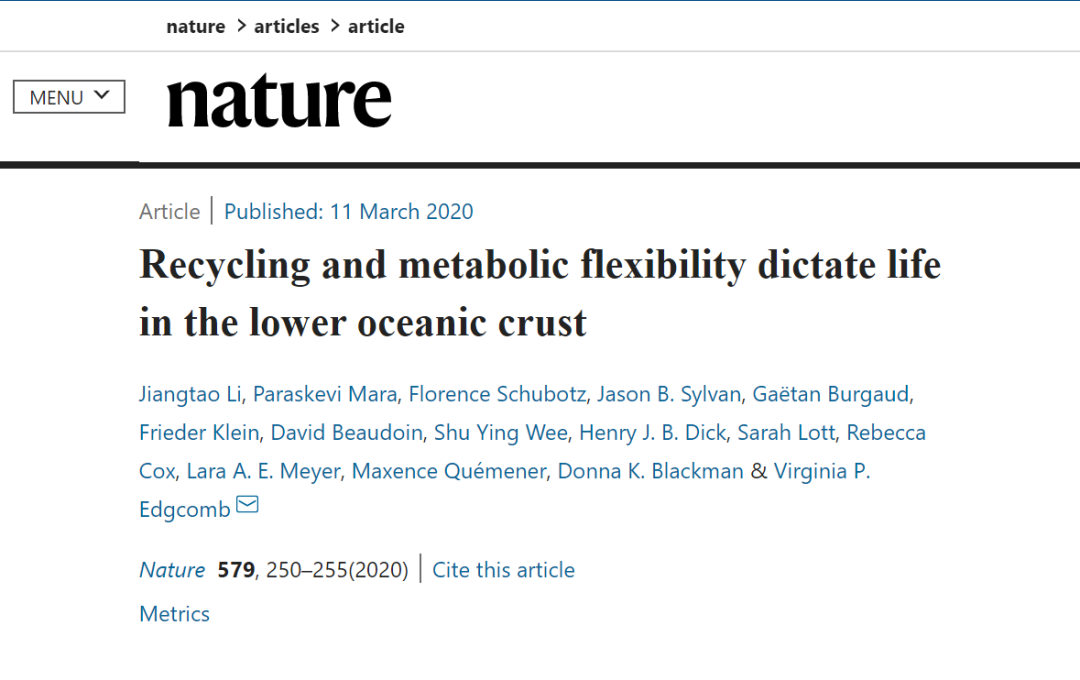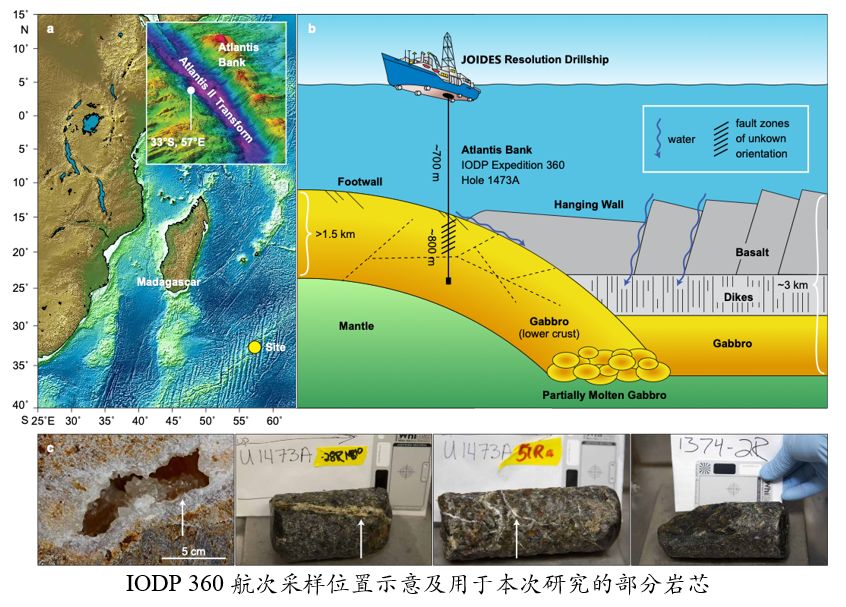On March 11, the journal Nature published online the latest research about deep biosphere from Jiangtao Li, an associate professor at School of Ocean and Earth Science, Tongji University and his international colleagues, "Recycling and metabolic flexibility dictate life in the lower oceanic crust". This research found evidence of active microbial communities living in the oceanic crust hundreds of meters below the seafloor and revealed their special survival strategies.

The lithified lower oceanic crust is one of Earth’s last biological frontiers as it is difficult to access. Microorganisms are known to be present in the Earth’s upper crust, but limited information exists about the lower oceanic crust. It is challenging for microbiota living in igneous basement of the lower oceanic crust to survive because of the difficulties in obtaining sufficient amounts of carbon and energy for growth and other processes. IODP Expedition 360 collected rock samples from up to 809 meters below the seafloor at the Atlantis Bank in the Indian Ocean, where the Earth’s lower oceanic crust is exposed, providing the opportunity to have an insight into how microorganisms are able to survive in this extreme environment.

Study site of the exploration of the intrusive oceanic crust by IODP Expedition 360 and some rocks used in this study
In this paper, assays of enzyme activities, lipid biomarkers, marker genes and microscopy indicate heterogeneously distributed and viable biomass with ultralow cell densities (131-1,660 cells per cm3). Cellular activities of these microorganisms appear to be very low based on enzyme activity measurements and mRNA recovery. Results from metatranscriptome revealed that although genes related to some autotrophic processes were detected, more unexpected heterotrophic processes (using organic material as a source of food), such as the recycling of amino acids to produce compounds that can be used in energy production and storage were identified. These strategies reflect the competition for limited and sporadically available resources in the deep rock biosphere.
Given the global expanse of the lower oceanic crust within known temperature limits for life, even low-biomass and slow-growing communities may make non-trivial contributions to global nutrient cycling.
This research is collaborated with international colleagues from Woods Hole Oceanographic Institution, University of Bremen, Texas A&M University, Université de Brest and Scripps Institution of Oceanography. This research is supported by the National Science Foundation of China, the Ministry of Science and Technology of China and the National Science Foundation (USA) grants.
Details please find this paper from link: https://www.nature.com/articles/s41586-020-2075-5
Li, J., Mara, P., Schubotz, F. et al. 2020. Recycling and metabolic flexibility dictate life in the lower oceanic crust. Nature 579: 250-255.